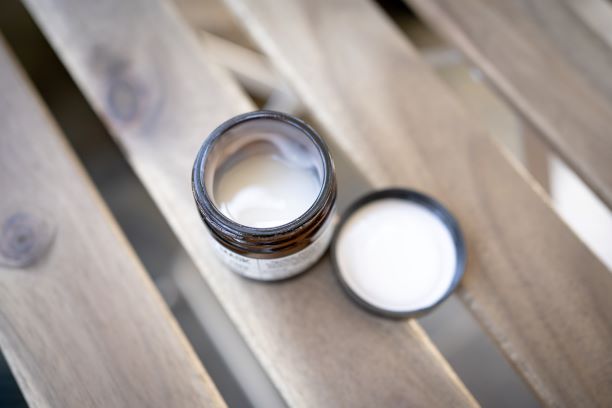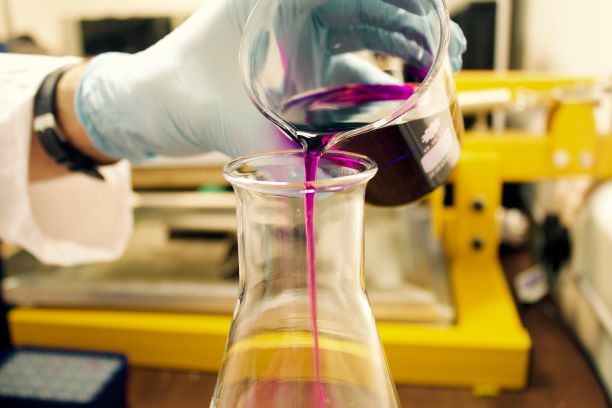Skincare | What’s in your products?
November 25, 2020 | Author: Jane WottonABOUT ME
 Although I graduated university with a pharmacy degree and worked as a pharmacist for 10 years in the UK, a move to the US gave me the opportunity to move in a direction that I had been embracing for a couple of years – away from the ‘Band-Aid’ version of health using pharmaceuticals to ‘fix’ things, and towards a more holistic version of wellness which involved taking responsibility for one’s health and well-being by making the right choices with regards to nutrition and lifestyle. A business that embraced this philosophy was Neal’s Yard Remedies (NYR) – a modern apothecary and a global leader in natural and organic skincare. I worked with the company to open the first US franchise, offering organic skincare together with herbal teas, essential oils, homeopathic remedies and flower essences. I obtained a diploma in homeopathic pharmacy and for the past 25 years have been a proud representative for NYR, sharing their mission of educating consumers and creating natural, organic beauty products that are efficacious, in a way that cares for people and our planet.
Although I graduated university with a pharmacy degree and worked as a pharmacist for 10 years in the UK, a move to the US gave me the opportunity to move in a direction that I had been embracing for a couple of years – away from the ‘Band-Aid’ version of health using pharmaceuticals to ‘fix’ things, and towards a more holistic version of wellness which involved taking responsibility for one’s health and well-being by making the right choices with regards to nutrition and lifestyle. A business that embraced this philosophy was Neal’s Yard Remedies (NYR) – a modern apothecary and a global leader in natural and organic skincare. I worked with the company to open the first US franchise, offering organic skincare together with herbal teas, essential oils, homeopathic remedies and flower essences. I obtained a diploma in homeopathic pharmacy and for the past 25 years have been a proud representative for NYR, sharing their mission of educating consumers and creating natural, organic beauty products that are efficacious, in a way that cares for people and our planet.
MY CONNECTION WITH LEXIE SHABEL
I met Lexi Shabel, founder of Breast Wishes Fund (BWF), at a women’s health event in Albuquerque, several years ago. She was drawn to the company and our products, and we had a great conversation about her organization, and her mission of education and being a resource for those looking to evaluate all their options after a cancer diagnosis. Over the months we became good friends, enjoying long walks and positive discussions about health and the world at her beautiful property just north of Santa Fe. I joined the board of Breast Wishes Fund and together with the other board members worked on ways to share information about BWF, raise funds, and continue the educational reach-out efforts.
Lexi was extremely knowledgeable about the problems with ingredients in personal care and after due diligence and extensive research, she decided to offer our products as a resource for the clients she counseled and we set up a partnership on her website. I was devastated when Lexi lost her struggle with breast cancer. Her tireless searching and questioning, not taking ‘no’ for an answer, and commitment to partnering with an amazing advisory board of practitioners made a difference and offered hope and a positive force for many people. Her journey and experiences, which she openly shared, inspired and encouraged women faced with the same diagnosis.
Her focus was always on education, wellness, and prevention which is also BeatCancer’s approach, and when the two organizations combined it was wonderful to see a true alignment of mission and vision: I am sure Lexi would be delighted that BWF has found such a natural new home.
PERSONAL CARE PRODUCTS AND CANCER

Many studies(1) have shown that the link between environmental factors and cancer vastly outweighs any genetic component, so our exposure to environmental toxins, pollution, an unhealthy diet, smoking, and so on plays a big part in the development of this disease. Although our ability to minimize exposure to some of these factors is limited by government regulation (pesticides, pollution, water quality), others such as diet and smoking are within our power. Skincare is an increasingly important consideration as a source of noxious substances that can impact our health, especially here in the US where the market is unregulated and there is very little oversight of ingredients.
At a time when those facing a cancer diagnosis can feel out of control and powerless, the opportunity to make a positive and well-informed decision about options open to them is very empowering. It can be challenging to make a real impact on some of the environmental toxins we are exposed to – much of which relates to where we live, however choosing good, organic nutrition, supportive therapies such as bodywork, counseling and energy healing, and healthy personal care products can feel very positive.
BACKGROUND
 The US personal care market is today valued at more than $17 billion with more than 115 million shoppers – the natural and organic skincare segment alone is valued at $5 billion.
The US personal care market is today valued at more than $17 billion with more than 115 million shoppers – the natural and organic skincare segment alone is valued at $5 billion.
With increasing awareness regarding the harmful effects of some ingredients commonly used in skincare and personal care, consumers are being encouraged to choose natural products, however the lack of regulation makes this challenging. With words like ’natural’ and ‘organic’ being used as marketing descriptions, labels with botanical imagery suggesting purity, together with a lack of ingredient transparency (many manufacturers just list ‘key’ ingredients) selecting a safe and healthy product can feel overwhelming.
The federal government heavily regulates food, drugs and even pesticides but personal care products aren’t subject to the same level of government oversight and unfortunately most shoppers are unaware of this glaring omission.
The FDA does not require safety testing of ingredients in personal care products before they are used:
- The federal law designed to ensure that personal care products are safe has remained largely unchanged since 1938.
- the agency doesn’t vet cosmetics before they reach store shelves. In fact, manufacturers don’t have to tell the government watchdog much of anything about their products — not the ingredients they use, where their products are manufactured, or even what their safety data shows.
- Instead, the cosmetics industry essentially polices itself. Ingredient safety is decided by the Cosmetic Ingredient Review (CIR), an industry-funded panel of scientific and medical experts that meets three times a year to assess the safety of chemicals used in cosmetics. The group is funded by the Personal Care Products Council, the main trade association for the cosmetic industry. The words ‘fox’ and ‘hen-house’ come to mind.
The FDA’s hands are also tied in other ways. The agency has no authority to issue mandatory product recalls — and it can’t require manufacturers to report cosmetic-related injuries. Consumers are encouraged to self-report reactions to personal care products and between 2014 and 2018 they made more than 27,000 complaints to the FDA about cosmetics they suspected caused harm. An examination of those records by Consumer Notice revealed injuries ranging from allergic reactions to hair loss to chemical burns to infections to cancer.
While cosmetic companies are required by law to list ingredients on labels in descending order of predominance, there are several loopholes in this rule. Under a trade secret exemption manufacturers are not required to list ingredients that are considered “trade secrets” on product labels. Instead, they need merely to add the phrase “and other ingredients” to the end of the product’s ingredient list.

They also don’t have to list the ingredients used to give the product a specific scent or flavor. Instead, they can just list the term ‘fragrance’ or ‘flavor’ on the label. If chemicals are added to a product to cover an undesirable smell, they can also be disclosed simply as ‘fragrance’. And if levels of the masking agent are low enough, it doesn’t have to be disclosed at all. These loopholes, together with the lack of a standardized nomenclature for ingredients, creates a very difficult environment for shoppers to make an informed choice.-
US vs EU
US consumers should be rightly horrified by the fact that many companies have different formulas for the US market compared with the Canadian and EU markets.
“Many Americans are unaware that they are absorbing untested and unsafe chemicals in their products,” said Alex Bergstein, a CT state senator who recently put forward legislation regarding ingredient safety. Bergstein was previously the chair of the Mount Sinai Children’s Environmental health center.
“Generally, the EU has got it right. In the US we have a strong favoritism towards companies and manufacturers, to the extent that public health and the environment is being harmed. The pendulum has swung in an extreme way and it’s really going to take a general awakening by the public.”
The disparity in standards between the EU and US has grown to the extent that it touches almost every element of most Americans’ lives. In cosmetics alone the EU has banned or restricted more than 1,300 chemicals while the US has outlawed or curbed just 11.
It’s possible to find formaldehyde, a known carcinogen banned in EU-sold cosmetics, in US hair-straightening treatments and nail polish. Parabens, linked to reproductive problems, are ruled out in the EU but not the US, where they lurk in skin and hair products. Coal tar dyes can be found in Americans’ eyeshadow, years after they were banned in the EU and Canada.
In 2009, the Campaign for Safe Cosmetics, along with 40 other organizations (including American Nurses Association, Physicians for Social Responsibility, the National Association of Pediatric Nurse Practitioners) sent a letter to Johnson & Johnson (J&J) outlining their concerns with the company’s products, particularly its baby shampoo. While J&J has removed a formaldehyde-releasing preservative from its baby shampoo in several countries, in the United States if you want carcinogen-free baby shampoo you need to pay double the price for the company’s “Natural” brand of baby shampoo. In one of the most recent cases J&J agreed to stop selling their iconic talc-based baby powder in the U.S. and Canada because of growing talc-asbestos-cancer concerns (but they are letting retailers sell down existing inventory in North American stores, and they have not stopped global sales).
While J&J may be the most high-profile brand to have this dual standard exposed, they are by no means the only offender.
PHYSIOLOGY OF SKIN

So why does all this matter?
The skin is often thought of as simply a barrier or covering that keeps our bones, muscles and vital organs intact. However the skin itself is an organ – the largest organ of our body, and has several important physiological functions including: protection, sensation, allows movement (muscles can flex and body can move) endocrine (production of Vitamin D in sunlight), excretion, immunity, and temperature regulation.
It is permeable to many substances, including the ingredients used in personal care products. Think about the last time you ate spicy food – for several hours afterwards you can experience the aroma of the food on the body as some components of the spices are excreted in perspiration. Similarly an easy way to demonstrate the permeability of the skin is to rub a cut garlic clove on the sole of your foot – within a few moments you’ll smell garlic on the breath!
On average, women use more than 12 products daily, theoretically exposing themselves to more than 160 chemical ingredients however the perceived wisdom is that ingredients of concern are present in such tiny amounts that they shouldn’t be an issue. In fact because the body’s own hormones convey messages throughout the body in tiny amounts, extremely low levels of chemicals, including many used in personal care products, may have serious effects on metabolism, reproductive development and risks for later life disease. The timing of these low dose exposures also matters. Low dose exposures at certain points in development – prenatally, during puberty – may have stronger or qualitatively different effects on health.
Most chemical safety studies look at the toxic effects of higher doses of chemicals and then assume decreasing toxicity with lower doses. Yet substances that disrupt the body’s own hormones — known as endocrine-disrupting compounds (EDCs) — can exert important biological effects at low doses(2). Common EDCs found in personal care products include phthalates – phthalates are a component of any product that contains ‘fragrance’ or ‘parfum’, so it’s one of the most ubiquitous and insidious chemicals.
CONCLUSION
All of us are exposed to toxic chemicals through our everyday use of cosmetics and personal care products as well as through the air we breathe, the food we eat, the water we drink, the cleaning products we use, the fire-retardants in furnishings, and much more. As a result, we all carry toxic industrial chemicals inside our bodies. Choosing organic food and safe skincare is a decision we have control over, and can be an effective way to lessen our toxic load.
There is much to be achieved in terms of educating consumers – the main influencers for personal care purchasing decisions are as follows: dermatologists 45%, friends 32%, social media 28%. Consumers who are interested in choosing safer products have to do all their own research, often having to position themselves as ‘outliers’ in their peer group due to the above-mentioned statistics regarding how the purchasing decisions are made. There are more and more online resources available to help however many offer conflicting advice due to the limitations of a database format, or incomplete research (e.g. in the absence of data some chemicals are given a positive rating).
Here are some suggested strategies:
- Simplify your regimen
- DIY – making your own skincare can be a fun and creative hobby
- Research products, ingredients and companies (look for complete ingredients lists, not just ‘key’ ingredients). And if a company doesn’t list ingredients on its website, there’s probably a reason why…
TOP 10 TO AVOID
- MEA/DEA derivatives
A type of surfactant used to produce a foaming effect, these derivatives are associated with known carcinogens. Look out for Cocamide DEA, Lauramide MEA, Linolemide DEA and Oleamide DEA when buying hand wash, shampoo and shower gel.
- EDTA
A powerful metal ion chelator that strips impurities from products and balances the formulation to help prevent it from spoiling. Look out for EDTA on ingredient lists.
- Parabens
Synthetic preservatives used in cosmetics, many have had concerns raised over their safety and estrogen-like activity. Look out for words ending in ‘paraben’, such as ‘methylparaben’ on ingredient lists.
- Phthalates
Used as a plasticizer to create flexibility in hair sprays and nail varnishes or as a solvent to stabilize the fragrance of a product, some phthalates are very toxic and have been banned from EU products. Look out for Dimethyl Phthalate and Diethyl Phthalate to avoid phthalates.
- Silicones
These synthetically produced emollients are often used in hair care and skincare products to create a smooth texture. Look out for words ending in ‘-thicone’ and ‘-oxane’, to avoid silicones.
- Genetically Modified ingredients
Not enough is known about the long-term implications – many GM ingredients are designed to withstand high levels of pesticides. Look out for GM-free products.
- Synthetic fragrances
Often hidden under the term ‘Parfum’ or ‘Fragrance’ on ingredients lists, some synthetic fragrances can trigger allergies and asthma.
- BHT
This petroleum-derived ingredient is used to prevent products from oxidizing. There are scientific debates with uncertain conclusions around its safety and possible link as a potential carcinogen. It’s also toxic to the aquatic environment. Look out for BHT on ingredient lists.
- Mineral oil
Often found in baby oils and balms, mineral oil is derived from petroleum – a non-renewable resource from a polluting industry. Look out for Paraffinum Liquidum and Petrolatum to avoid mineral oil.
- Triclosan
An antimicrobial and antifungal preservative often used in deodorants/antiperspirants, mouthwashes and toothpaste. Some research indicates it may contribute to antibiotic resistance in bacteria. Look out for Triclosan on ingredient lists.
B.Pharm, D.H.Ph, M.B.A.
Founding Regional Leader
Tel/Text: 203 733 2680
Email: jane@lovelyskinnow.com
Join the conversation: Ask Holistic Cancer Coach Facebook Group
Grandviewresearch.com
ConsumerNotice.org
EWG
SafeCosmetics.org
MadeSafe.org
The Guardian, 5/22/19
